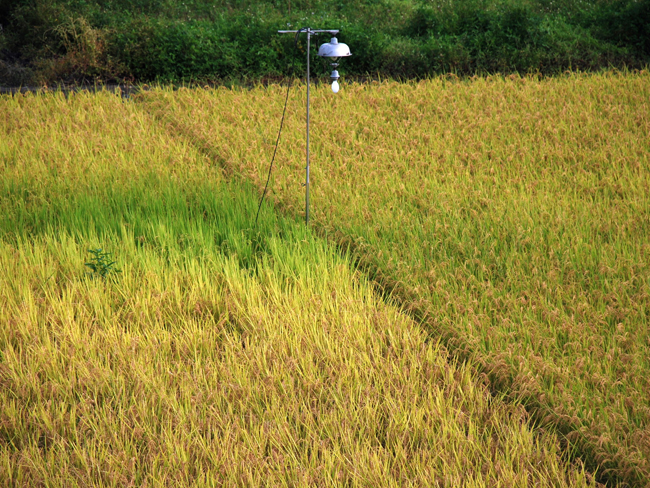Innovative techniques
Light has all encompassing effects on crop production. Day light provides energy required for photosynthesis that is the cornerstone of all crop production. In addition, it serves as one of the major environmental signals affecting many aspects of plant growth and development, and regulating the transition from vegetative stage to reproductive stage. The effects of moonlight and starlight on plants are still not clear. However, excessive or obtrusive light brought about by human activities in the nighttime such as streetlights, building lighting, advertising, etc. can be problematic for normal plant growth and development. They may also disrupt normal photoperiodic response patterns of particular plants. Scientists at TARI have found that excessive light at night promoted the growth of rice plants. The stimulating effect was most pronounced when the rice plant was close to the light source with higher light intensity or exposed to longer period of excessive light. But there are negative sides of positive things. Excessive light at night increased the mean number of days from planting to heading, or from heading to harvesting. And it decreased number of spikelet per panicle, spikelet fertility, 1000-seed weight, thus grain yield.
To avoid light pollution for the rice production, TARI scientists have conducted experiments and come up with their recommendations of not to use high-pressure sodium, mercury-vapor or tungsten lighting fixture for nighttime lighting, or to grow rice at least eight meters from the nightlight source. Besides, in nightlight pollution-prone rice fields, it is recommended not to grow early-maturing Japonica (e.g., Taikeng No. 11) or Indica rice varieties that are often light-sensitive, but medium or late maturing varieties (e.g., Taikeng No. 2) that are low or null light-sensitive. Moreover, the use of directional LED light source, shading plate or filter net to reduce light intensity or illumination time may also minimize nightlight pollution on rice plants.




